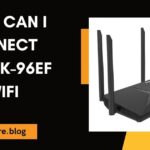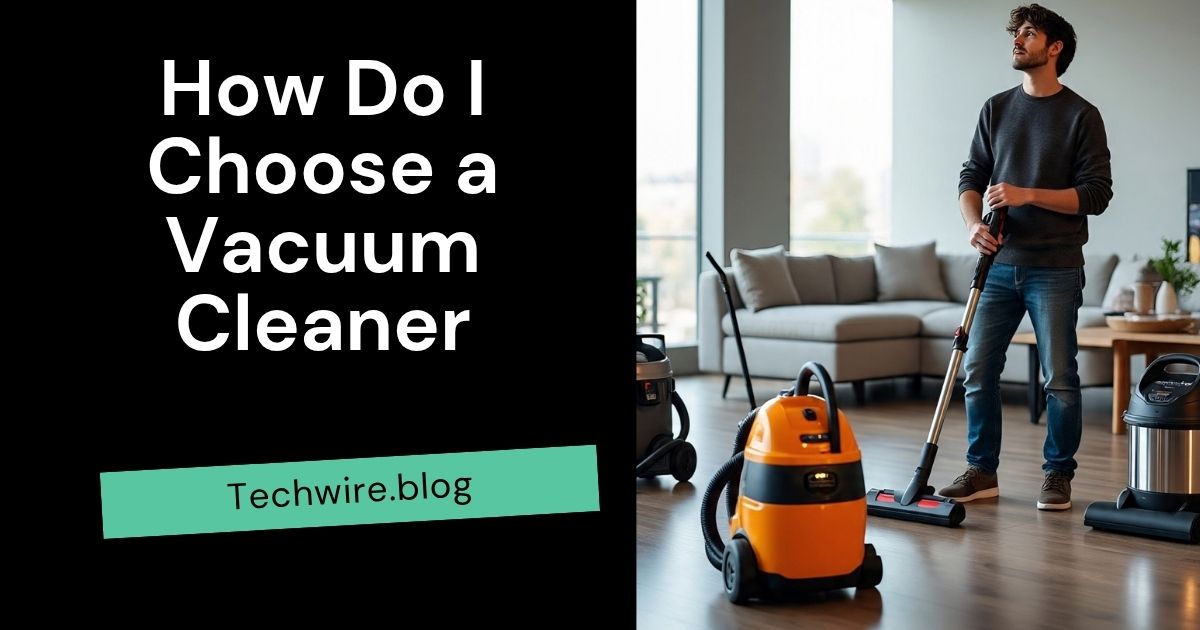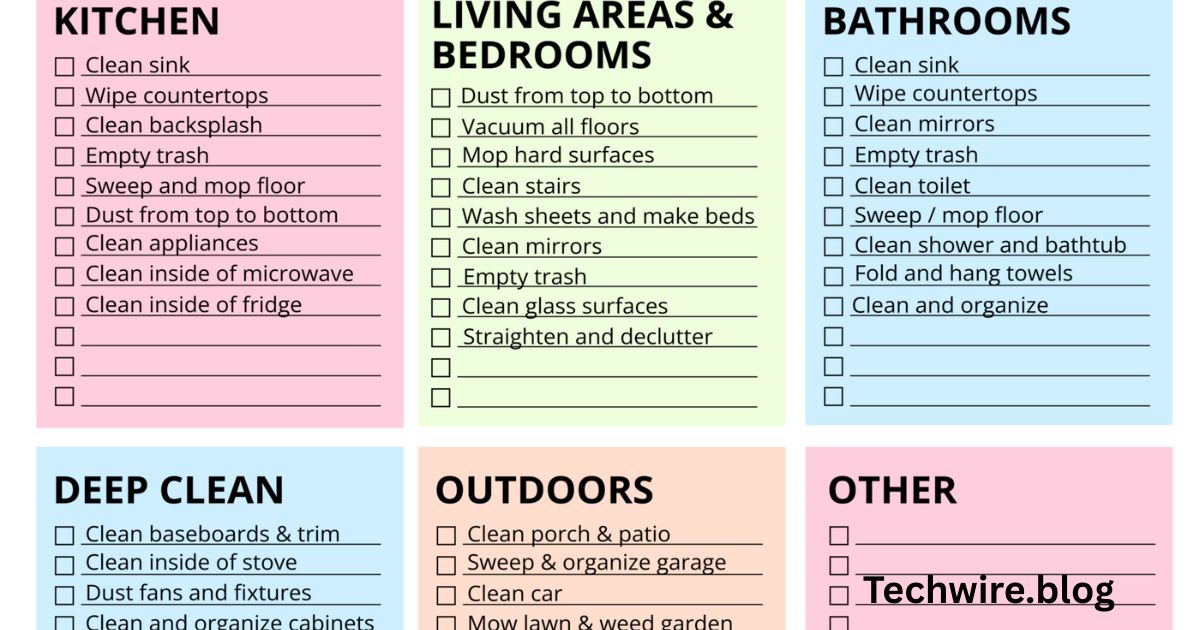Choosing a vacuum cleaner may seem like a simple task, but with the wide range of models, features, and price points on the market, it can become overwhelming. Whether you’re tackling pet hair, hardwood floors, or high-pile carpets, selecting the right vacuum cleaner is essential for effective and efficient cleaning. This guide will help you understand the different types of vacuum cleaners, their features, and how to match one to your specific needs.
Understanding the Basics: What Is a Vacuum Cleaner?
A vacuum cleaner is a device that uses suction to remove debris, dust, and dirt from floors, upholstery, and other surfaces. The debris is collected by a dustbag or a cyclone for later disposal. Vacuum cleaners come in a variety of forms, such as upright, canister, handheld, robotic, and more. Choosing the right type depends on your cleaning needs and the environment where it will be used.
Types of Vacuum Cleaners
Understanding the major types of vacuum cleaners is the first step in narrowing down your choices.
1. Upright Vacuums
These are ideal for large carpeted areas. Upright vacuums usually offer strong suction power and often come with motorized brushes for deep cleaning.
Best For: Homes with lots of carpets
Pros: Wide cleaning path, powerful
Cons: Heavier and less maneuverable
2. Canister Vacuums
Canister vacuums separate the motor and the dust container from the cleaning head, which makes them easier to maneuver.
Best For: Hardwood floors, stairs, and under furniture
Pros: Flexible, quieter
Cons: Bulkier, more parts to handle
3. Stick Vacuums
Lightweight and slim, stick vacuums are best for quick clean-ups and smaller areas.
Best For: Small apartments, quick jobs
Pros: Easy to store and carry
Cons: Less power and smaller dust capacity
4. Robotic Vacuums
Robotic vacuum cleaners automate cleaning and are ideal for busy individuals or people who prefer hands-free cleaning.
Best For: Light daily cleaning
Pros: Automated, time-saving
Cons: Expensive, not suitable for deep cleaning
5. Handheld Vacuums
These small, portable units are great for spot cleaning or cleaning cars and upholstery.
Best For: Cars, furniture, corners
Pros: Portable, easy to use
Cons: Limited battery life, low suction power
Key Features to Consider
Once you’ve decided on the type of vacuum, consider these features to make sure the model suits your lifestyle.
Suction Power
The suction power determines how well a vacuum cleaner can lift dirt. Higher wattage often indicates better suction but also depends on how efficiently the motor converts energy.
Filtration System
If you or anyone in your family suffers from allergies, look for vacuums with HEPA filters. These filters trap fine dust and allergens, ensuring cleaner air quality.
Bagged vs. Bagless
- Bagged Vacuums: More hygienic when disposing of dirt but need regular replacement.
- Bagless Vacuums: More economical but can expose you to dust when emptying.
Corded vs. Cordless
Cordless vacuums offer more flexibility and mobility, especially in homes with few power outlets. However, they require charging and typically have shorter run times.
Noise Levels
Some vacuums are noisier than others. If noise is a concern, check for decibel ratings. Models under 70 dB are considered relatively quiet.
Attachments and Accessories
Look for models that come with accessories like:
- Crevice tools
- Dusting brushes
- Upholstery tools
- Motorized brush heads (for pet hair)
Matching the Vacuum to Your Home
Floor Type
- Hardwood Floors: Choose vacuums with soft rubber wheels and adjustable suction.
- Carpets: Look for models with motorized brush rolls.
- Tiles or Mixed Flooring: A versatile vacuum with adjustable settings is ideal.
Pets
Pet owners should opt for models specifically designed to handle fur, dander, and odors. These often include powerful suction and specialized attachments.
Allergies
For allergy sufferers, vacuums with HEPA filtration and sealed systems are a must to trap allergens and prevent them from being released back into the air.
Size of Living Space
- Small Apartments: Stick or handheld vacuums are ideal.
- Large Homes: Upright or canister vacuums with large dust capacity work best.
Energy Efficiency and Maintenance
Energy-efficient models consume less power without sacrificing performance. Always check for energy ratings if available. Maintenance is also key—check how easy it is to empty the bin, wash filters, or replace belts.
Budget Considerations
Vacuum cleaners range in price from $50 to over $1,000. Consider what features are essential for you:
- Budget (under $100): Basic stick or handheld vacuums
- Mid-Range ($100-$300): Good suction, decent filtration, multiple attachments
- Premium ($300+): High-end features, strong suction, HEPA filtration, robotic automation
Brand Reputation and Warranty
Some brands are known for durability and quality. Popular choices include:
- Dyson
- Shark
- Miele
- Bissell
- Hoover
Always check the warranty period and what it covers. A longer warranty often indicates higher build quality.
Reading Reviews and Testing
Before purchasing, read customer reviews on multiple platforms. Look for consistent issues or praise related to durability, suction, or ease of use. If possible, test the vacuum in-store to see how it handles.
Future Trends in Vacuum Cleaners
The industry is evolving rapidly with features like:
- Smart connectivity via apps
- Voice control integration (e.g., with Alexa or Google Assistant)
- Advanced mapping in robotic vacuums
- Self-cleaning or self-emptying bins
These features offer convenience but may come at a premium price.
Conclusion
Choosing the right vacuum cleaner depends on your specific needs—floor type, presence of pets, allergy concerns, and budget. From traditional upright models to cutting-edge robotic cleaners, the market has something for everyone. Understanding key features and aligning them with your lifestyle will ensure you invest in a device that makes cleaning more efficient and less of a chore.
To learn more about the history, functionality, and evolution of these devices, visit the full article on Wikipedia: Vacuum Cleaner.










